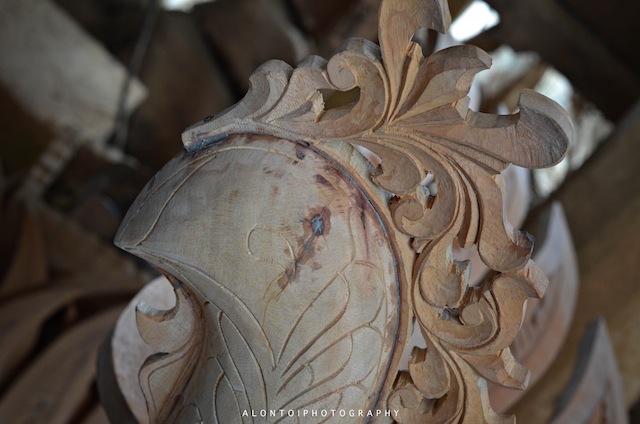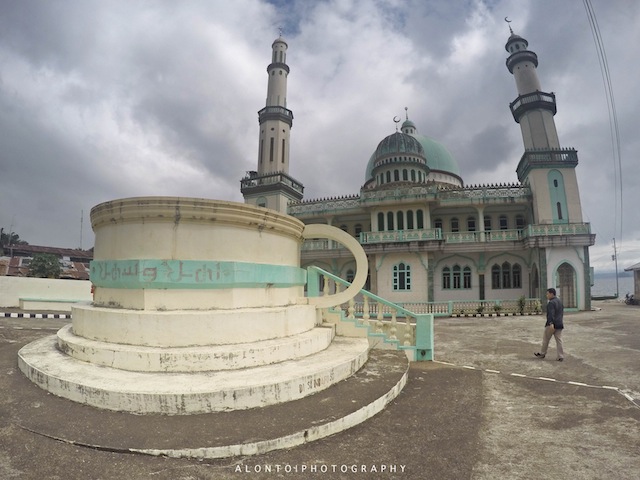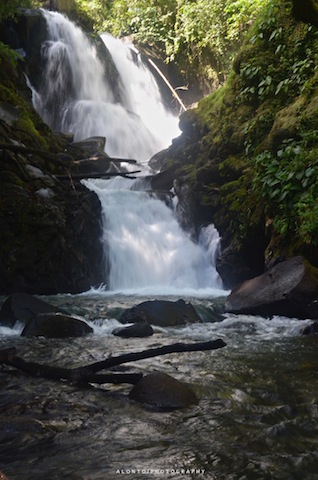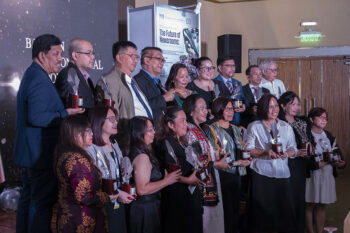LANAO DEL SUR (MindaNews/16 Jan) — I am a Muslim. A Moro. A Meranao. However, most of my life was spent outside Lanao del Sur, the province of most Meranaos. For some of my friends in Manila, I was their closest experience to the Moro way of life and culture. They had questions – the basics. Why don’t you eat pork? Will you marry more than one woman? Have you been to Saudi Arabia to visit Mecca? And then there were the usuals when an event would be shown and talked about all over the news – What is jihad? Are you in favor of Al-Qaeda? Taliban? ISIS? Are the Moro groups in the South in connection with terrorists organizations?
Oftentimes I did feel that I was able to satisfy their queries but I cannot deny that there were times when I felt that I had to do some self-assessment. Who am I really? Where do I come from? Fast-forward to year 2015 and in a Facebook groupchat of an organization named Young Moro Professionals Network (YMPN), there was an open invitation for a three-day tour of Lanao del Sur. It wasn’t the usual tour with a complete package of food and accommodation. This guy Nords Maguindanao (who is anything but a Maguindanaon hehe) said that if the expedition was to push through, we would be the pioneers, the trailblazers since tourism in Lanao del Sur isn’t a popular idea (which was actually sad considering what it had to offer). He said that there was an itinerary but this could change along the way.
So there I was behind my laptop, already thirty-two years old when an invite to join Ranaw Kandlikaw Expedition group popped up in my Facebook notification. 32 years old and I was just about to discover my homeland, my roots. I clicked ‘join’.
December 28, 2015 – Day 1
We met in front of Aga Khan Musuem which is inside the campus of the Mindanao State Main University in Marawi City. More than half of the team was already there, mostly new faces, strangers who would be my company for the next three days. There was Bambie who’s my officemate. The two girls from the Bureau of Cultural Heritage of the Autonomous Region in Muslim Mindanao (ARMM), Ain and She. There were the two guys from Pualas, Lanao del Sur who were incidentally both Foresters of the Department of Environment and Natural Resources (DENR), Asmari and Zob.
Ate Leah and Reign were the experienced Mother-and-daughter campers. Then there was Dally who was followed by her sister Mida the following day. The youngest of the team, but not to be outdone since she already climbed two mountains in Mindanao was Habiba. Of course, the Team Leader Nords was also there with his drone which he purposely bought just for the trip. Now we wouldn’t be complete without the one behind the wheel, Kuya Esh.
Like any activity that a Moro Muslim engages in, we started with a short prayer and it was followed by a message from Ate Samira, a founding member of YMPN. We came from different backgrounds but all had a similar purpose, to rediscover Lanao del Sur and to promote its almost unnoticed beauty and treasures.
The expedition officially kicked-off inside Aga Khan Museum. To think that my last visit inside this Museum was back in the 90s when I was about to start high school.
After touring the museum, we then proceeded to the municipality of Tugaya. This town is famous for two things – their wood carvings and brass products. You may have seen these products displayed in residences and offices.
 Details ofDetails of a Sarimanok wood carving. Photo by Andrew Alonto
Details ofDetails of a Sarimanok wood carving. Photo by Andrew Alonto
The crafting of these products are due to the innate artistic skills of the people of Tugaya which have been passed on from generation to generation. In fact, when asked if they would apply the help of modern machines to make the task easier, they said that they would still prefer to use their hands with tools. It goes to show that they hold a high regard for the quality of the products they sell. For them, each finished art is an expression of themselves, their culture and history.
Next to do in our itinerary after Tugaya was to visit the two masjids in Bacolod-Kalawi. We first arrived in Kalawi and performed our Dhur (Mid-Day) Prayer. The masjid is also by the lake which can be seen everytime you take the Marawi-Cotabato highway. I always pass by this place and I must admit that it is quite embarrassing that it was my first time to actually go inside and look around.
Just a few minutes away is the Bacolod Masjid. What’s unique about it is the sculpture of a teacup at the front of the masjid. It is said that back in the days, this was where the elders and leaders of the community would meet over a cup of coffee.
 Giant coffee to go? Photo by Andrew Alonto
Giant coffee to go? Photo by Andrew Alonto
Ganassi was next in our itinerary but we decided to take a little detour. Between Bacolod-Kalawi and Ganassi is the town of Madamba and you see, it’s known among the Meranaos that the view of the Lake from the town of Madamba is breathtaking. Going there was an uphill road so I was pretty sure that we were in for a treat. After about an ascent of 10 minutes, Lake Lanao appeared to me like it has never appeared before:
 The author (center) and other participants of the first Ranaw Kandilakaw Expedition. Photo from Andrew Alonto’s blog
The author (center) and other participants of the first Ranaw Kandilakaw Expedition. Photo from Andrew Alonto’s blog
I was told that the scenery in Madamba is just one of the many stunning views of Lake Lanao. This made me even more excited. We returned to our itinerary and proceeded to Ganassi. If you’re coming from Cotabato, Ganassi would be your introductory town to Lake Lanao. This is also the town where the first Dragonboat race in Mindanao was held. The seed of Mindanao Dragonboat racing was planted here, so they say.
Ganassi is also home to a huge Torogan. Living in a Torogan before meant that you belonged to a family of high social status. Meranao royalties lived in Torogans. Although the age of the Torogan in Ganassi is very difficult to determine, locals say that it’s been there for about 200 years. Some argue however that it may have been constructed when the Americans arrived in Lanao during the 1900s since the roofing was made of galvanized iron sheet and the use of such material was introduced to the Moros by the Americans.
Before leaving Ganassi, we also made a short trip to one of its villages, Barangay Gadungan. What was amazing here is that it presented a view of a mountain range that actually includes the different towns that we just visited – Tugaya, Bacolod-Kalawi, Madamba and Ganassi.
It was late in the afternoon when we left Ganassi for Pualas, the next town. It was decided that we would spend our night at Pualas. One of the team members, Asmari, was gracious enough to offer his home for the night. But before we proceeded, we took a stop at the Lake Dapao-Mt. Baya Eco-Tourism Project by the DENR. It’s an uphill climb on a paved cement roughly 500 meters. We were told that we were the first visitors to that site. At the top, you’ll be treated to a majestic view of Lake Dapao. Yeah, there is another lake in Lanao del Sur that can also be equally beautiful. The sunset view was captivating and the cool breeze made it even more perfect.
Asmari’s village was across the lake and we had to cross Lake Dapao at around 7 p.m. to get there. Locals said that for first timers who would cross the lake, one should toss a coin as a form of payment or respect. We of course obliged. After the 15-minute boat ride, it was another hike of about 400-500 meters to Asmari’s place. The pathway was dark and all we had to light the way was a couple of flashlights. As soon as we arrived, we were welcomed by his Aunt who was the only occupant of their house. She even cooked and prepared dinner all by herself. Personally if you ask me, that already, in some degree, dismisses stories that Moro provinces are dangerous.
December 28, 2015 – Day 2
Since it was pitch black when we hiked to Asmari’s place, I was curious how the outside really looked during dawn. Little did I know that what we hiked during the previous night was a farm – yeah you got that right, cows and horses. But other than that, the sunrise view across the lake and behind Mt. Baya was the Morning Glory, the Scene Stealer. It was just beautiful. One of those moments that you just want to sit down and take it all in.
After Pualas, we headed to the neighboring town of Pagayawan. We were told by locals that there’s a hidden waterfalls just nearby. As usual we had to hike with one of the locals as a guide. As an unexperienced climber or hiker, I think getting to the falls was by far the most challenging trek we had to do. You could tell that not many have visited the place since there wasn’t any proper trail to follow. Nonetheless, it was an experience. Each step and each brush of a twig was liberating.
 Kabobotawa Falls. Photo by Andrew Alonto
Kabobotawa Falls. Photo by Andrew Alonto
Going to the Kabobolotowa Falls almost took us the entire morning. We were hungry. Our lunch was in another town called Picong, about a 45-minute drive away. Gandingan, the “restaurant” where we had lunch, is a famous stopover for travelers. It’s only located along the highway and people go there for their grilled chicken and fresh buko (young coconut) juice.
During lunch at Gandingan, we were met by Asmari’s cousins. They would later on be our tour guides for the rest of the day since they were from the area and they had relatives around. After a sumptuous meal, we headed to a coastal village to visit Ibus Island which is still part of Picong. We were fetched by a motor boat and went around the island. Surprisingly, coral reefs can be found just off the coast of Ibus.
It was also low tide when we went around Ibus so the long stretch of sand revealed itself to us. The current and waves even left beautiful marks on the sand. If we only had the time, it would have been nice to just stay there and bask under the sunlight.
Another historical site in Picong is the grave of Sultan Kudarat. He was the 7th Sultan of Maguindanao. He is considered as one of the greatest leaders as he managed to unite the Moros against the invading Spaniards during the 17th century. There are other claims as to where the great Sultan was buried and that is why there have been difficulties in officially declaring the gravesite of Sultan Kudarat. Another gravesite that is being claimed is the one in Simuay, Sultan Kudarat in Maguindanao.
We arrived at Balabagan past 7 if my memory serves me right. We were the only guests so we pretty much had the resort all to ourselves. Instead of getting cottages, we decided to just pitch the tents and spend the night by the beach and under the stars. Nords and Reign had kitchen duties while the others went back to town proper to buy additional supplies like medicines and water. The ever-reliable Pancit Canton was there to rescue us from hunger. Also, we were able to buy gasoline to fire up the generator and this enabled us to charge our phones and cameras.
It was then time to sit by the bonfire and listen to different stories. I’m not really much of a storyteller so I just sat there and enjoyed the company. After listening for a while, I placed my praying mat on the sand, lied down and gazed upon the moonlit stars until I fell asleep.
Day 3 – December 30, 2015
It was time to return to Marawi but it would be through a different route. That meant that once we did arrive in Marawi, we would have completed the expedition around Lake Lanao. Our next stop was in the municipality of Binidayan, It was also our jump-off point to visit Mala-a-Balt (Big Island) and Maito-a-Balt (Small Island) which are both situated in the middle of Lake Lanao. We had to be there early to take advantage of the morning calmness of the lake and avoid the huge waves in the afternoon.
It was also in Binidayan where you can find the floating Masjid. It’s actually on an islet about 50 meters from the shore and the people built a bridge to connect it.
Next on our list was the marker in Bayang specifically in Padang Karbala where the Battle of Bayang transpired. It was a two-day battle that started the Moro-American War in 1902.
The marker reads as follows:
And say not of those who are slain in the way of Allah: “They are dead.” Nay, they are living through ye perceive (it) not. (11:154)
Battle of Bayang
On this sacred ground in Padang Karbala, lies the remains of hundreds of martyred noblemen from the Sultanates whose heroic defense against the American Expeditionary Forces from May 2 to 3, 1902, signaled the beginning of the Moro-American War from 1902-1915.
This centennial memorial is dedicated to the brave men and women of Kota Pandapatan who gave up their lives in defense of their homeland and Islam. The Americans chronicled this event as the “fiercest battle in all of the insurrection”. Dedicated on this 2nd day of May, 2002.
Allahu akbar!
After Bayang, we proceeded to the municipality of Taraka. It’s also a historical place and a home to some legends including the Omoy – Chinese jars that were given to a Meranao Royal family as gifts. Stories say that there were eight originally but only three remain and that paranormal activities have been related to it.
On the way back to Marawi, we also visited another Torogan in Ramain and the old City Hall which is on a hill top that overlooks Marawi City.
So there you have it. Three days around Lanao del Sur.
I’m not a master of our history and culture yet but I can say that I do feel closer to my identity now. Lanao del Sur does have the potential to be a bucket list destination for travellers. Some may say that it’s still a long way to go before Lanao del Sur can be formally and officially be considered as an attraction in the Philippines but with the right people and with the right attitude working for it, I can see it happening soon.
For three days we asked people around how to get from Point A to Point B and in doing so, not only did we find the destination we were looking for but we also found ourselves. For three days I was with people I hardly knew but we shared a common goal – to explore and rediscover what was almost lost. Why? So that others may follow.
(Ameen Andrew L. Alonto currently works in the Communications Group of the Bangsamoro Transition Commission (BTC). He is a graduate of Political Science from Far Eastern University and has been into photography for about seven years now. He is also a member of the Young Moro Professionals. This piece was first published in Alonto’s blog, https://andrewalonto.wordpress.com/2016/01/07/so-that-others-may-follow/. The blog features more photos on the expedition. MindaNews was granted permission by Mr. Alonto to reprint this piece)
